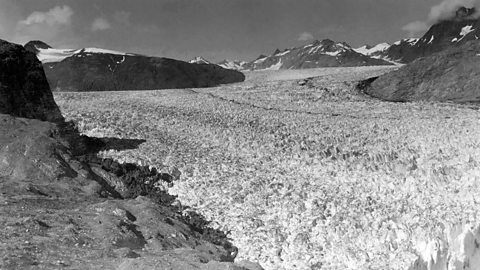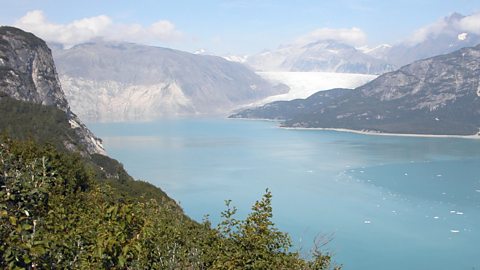Evidence of global warming
Thermometer readings
On-going temperature recordings using thermometers have shown a clear warming of the Earth's temperature over the past few decades. By using this data, scientists have found that the EarthÔÇÖs average surface air temperature has increased by around 1┬░C since the year 1900. As of 2021, the period between 2010 and 2020 was the warmest 10-year period on record, with 2016 and 2020 being the warmest years since records began. The degree to which the climate warms in the future will depend on natural climate variability and the level of greenhouse gas emissions. If greenhouse gas emissions continue then average global temperatures will rise, however some regions such as the Arctic will warm faster than others.
Glacier retreat
Over the past 50 to 100 years, photographic evidence has shown that the world's glaciers have been melting, which has caused them to retreat. The Muir glacier has retreated over 50 km since observations began in 1893. The rise in global temperatures is causing glaciers to disappear and is increasing the melting of sea-ice in the Arctic. Arctic sea-ice has been disappearing at a rate of 12.7% for every decade since measurements began in 1979.
A view of Muir glacier, Alaska, in 1941 and 2004:


Ice cores
Scientists often use ice coreA sample of ice, taken by drilling through a glacier or ice sheet. to detect changes in temperature. When snow falls it traps air into the ice. When scientists take a core of ice it reveals the carbon dioxide and methane concentrations at the time the snow fell. Scientists believe there is a close link between the amount of these greenhouse gases in the atmosphere and global temperatures. Layers of accumulation and melting in the ice can reveal the temperature of each year for the past 400,000 years. According to scientists studying the ice cores, there is clear evidence of a rapid increase in temperature these past decades.
Early spring
In recent years there have been signs of a seasonal shift - spring arrives earlier and winters tend to be less severe. These seasonal changes affect the nesting and migration patterns of wildlife.
Rising sea levels
Between 1900 and 2019, average global sea level rose by 0.21m.